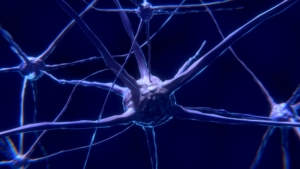Nutrition benefits brain network organization, new research finds
By Katherine Shagoury
 Monounsaturated fatty acids (MUFAs), a class of nutrients found in olive oils, nuts, and avocados, may be linked to general intelligence. The relationship is driven by a correlation between the nutrients and the the organization of the brain’s attention network, according to a new study by the University of Illinois.
Monounsaturated fatty acids (MUFAs), a class of nutrients found in olive oils, nuts, and avocados, may be linked to general intelligence. The relationship is driven by a correlation between the nutrients and the the organization of the brain’s attention network, according to a new study by the University of Illinois.
Nutrition has been linked to cognitive performance, but researchers have not pinpointed what underlies the connection. The study of 99 healthy older adults compared patterns of fatty acid nutrients found in blood samples, functional MRI data that measured the efficiency of brain networks, and results of a general intelligence test. The research was published in the journal, NeuroImage, and announced in a September 7 press release.
“Our goal is to understand how nutrition might be used to support cognitive performance and to study the ways in which nutrition may influence the functional organization of the human brain,” said Aron Barbey, the study leader and a professor of psychology. “This is important because if we want to develop nutritional interventions that are effective at enhancing cognitive performance, we need to understand the ways that these nutrients influence brain function.”
In this study, researchers examined the relationship between groups of fatty acids and brain networks that underlie general intelligence, according to Marta Zamroziewicz, Ph.D, the lead author of the study. “We sought to understand if brain network organization mediated the relationship between fatty acids and general intelligence,” she said.
Studies suggesting cognitive benefits of the Mediterranean diet, which is rich in MUFAs, inspired the researchers to focus on this group of fatty acids. They examined nutrients in participants’ blood and found that the fatty acids clustered into two patterns: saturated fatty acids and MUFAs.
“Historically, the approach has been to focus on individual nutrients. But we know that dietary intake doesn’t depend on any one specific nutrient; rather, it reflects broader dietary patterns,” said Barbey, who also is affiliated with the Beckman Institute for Advanced Science and Technology at Illinois.
The researchers found that general intelligence was associated with the brain’s dorsal attention network, which plays a central role in attention-demanding tasks and everyday problem solving. In particular, the researchers found that general intelligence was associated with how efficiently the dorsal attention network is functionally organized used a measure called small-world propensity, which describes how well the neural network is connected within locally clustered regions as well as across globally integrated systems.
In turn, they found that those with higher levels of MUFAs in their blood had greater small-world propensity in their dorsal attention network. Taken together with an observed correlation between higher levels of MUFAs and greater general intelligence, these findings suggest a pathway by which MUFAs affect cognition.
“Our findings provide novel evidence that MUFAs are related to a very specific brain network, the dorsal attentional network, and how optimal this network is functionally organized,” Barbey said. “Our results suggest that if we want to understand the relationship between MUFAs and general intelligence, we need to take the dorsal attention network into account. It’s part of the underlying mechanism that contributes to their relationship.”
Barbey hopes these findings will guide further research into how nutrition affects cognition and intelligence. In particular, the next step is to run an interventional study over time to see whether long-term MUFA intake influences brain network organization and intelligence.
“Our ability to relate those beneficial cognitive effects to specific properties of brain networks is exciting,” Barbey said. “This gives us evidence of the mechanisms by which nutrition affects intelligence and motivates promising new directions for future research in nutritional cognitive neuroscience.”
















